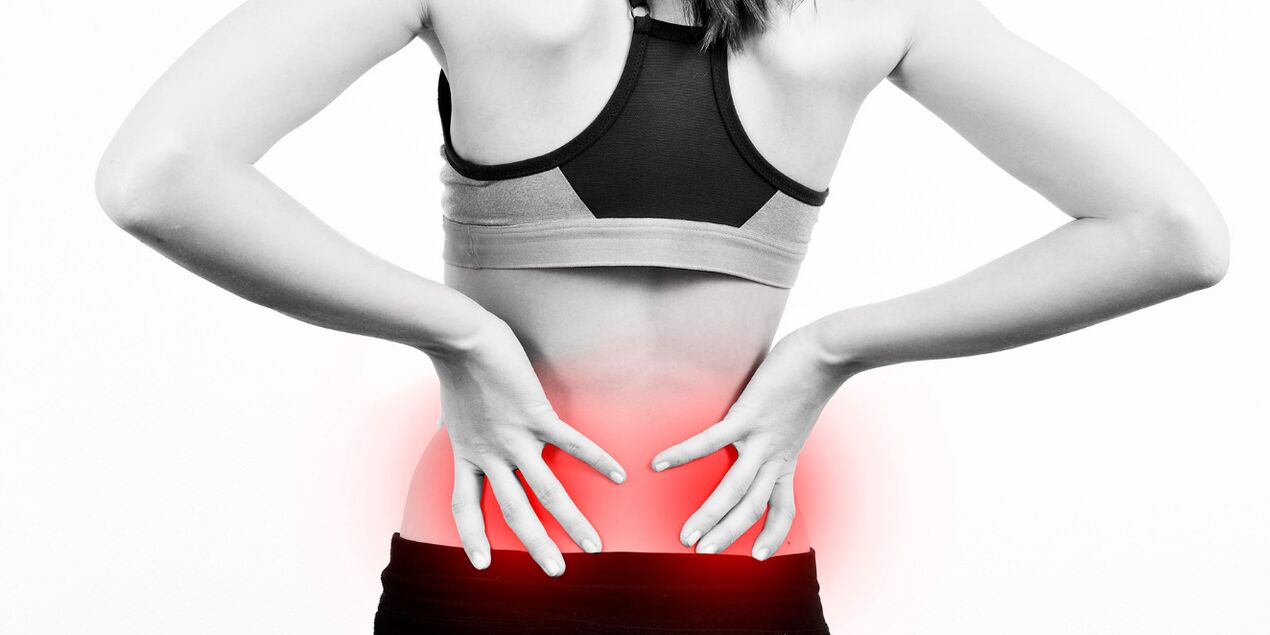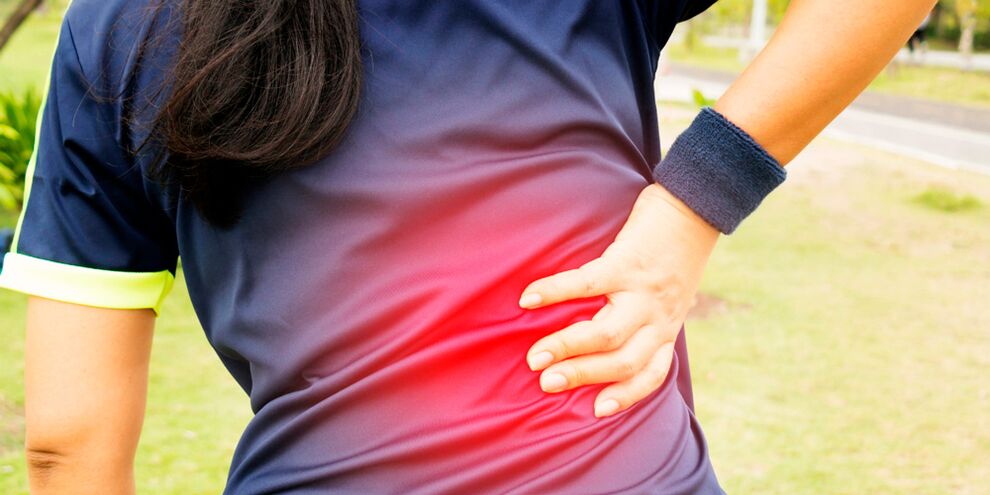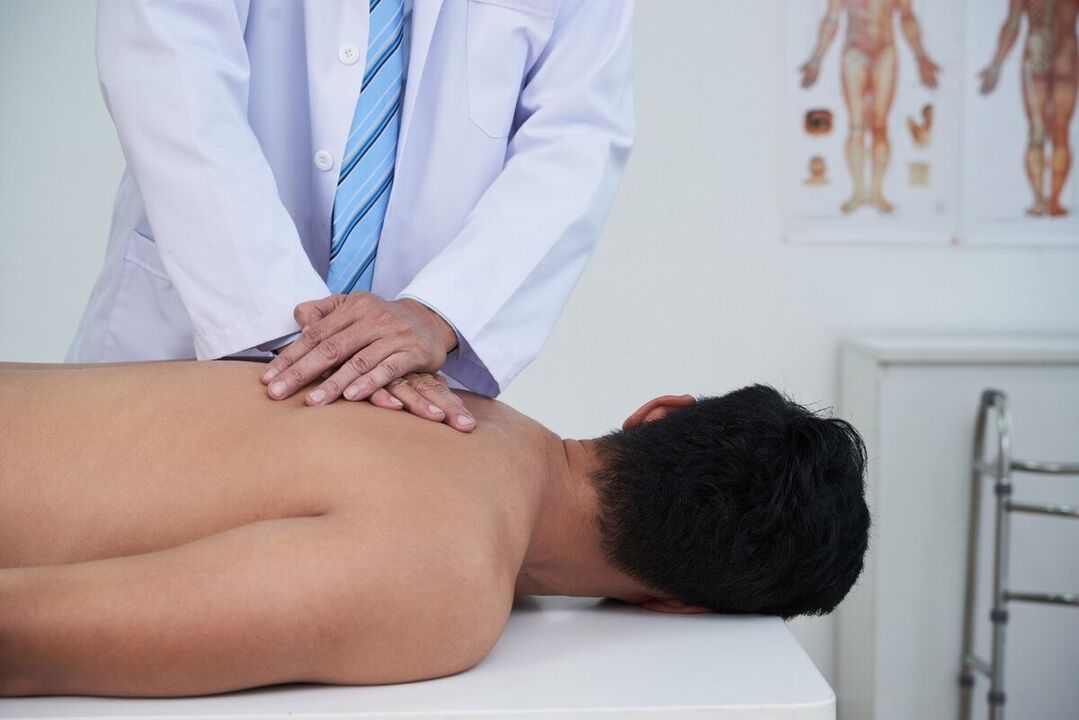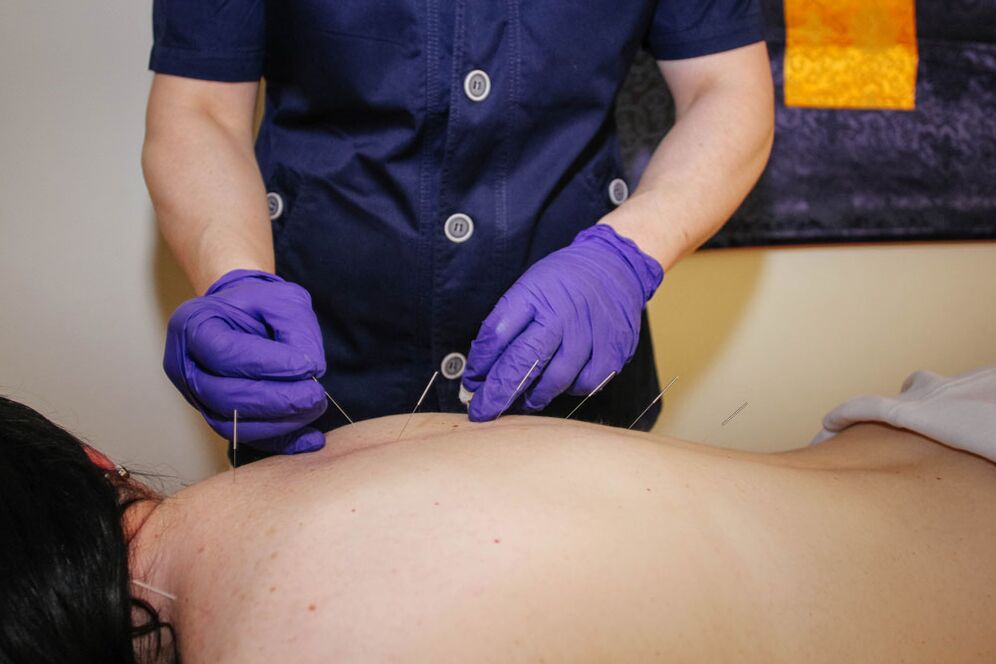
What to do if severe back pain suddenly occurs, how to relieve the pain and can you do it yourself? Of course, it's good to know how you can help yourself if you suddenly experience severe pain, but you shouldn't limit yourself to that: after the first emergency self-help, you should consult a doctor immediately. In the Moscow Paramita Clinic you will always be helped: they will determine the cause of the pain and eliminate it.
What to do if you have acute back pain?
Back pain occurs regularly in 60-80% of the population. This is the second most common cause of temporary disability after acute respiratory viral infections. Acute back pain can begin suddenly and end just as suddenly, but it can subside easily and become chronic. This should not be tolerated, it is better to immediately consult a doctor.
Do not panic
The occurrence of severe back pain does not mean that a person cannot be helped; In most cases everything can be treated successfully, so there is no need to panic. But it's important to know how to help yourself and relieve the pain, and then see a doctor immediately. Contacting a specialist is necessary because back pain is caused by many diseases and requires different treatment approaches.
This is how you can relieve your symptoms yourself
Sometimes the pain syndrome is so severe that the person remains in the position in which he was caught by the attack. In this case you need:
- Lie on your back on a hard surface or the floor and place a blanket on top. If you cannot straighten your back, you need to adopt a position that causes minimal pain.
- Ask your loved ones to give you a tablet of any painkiller; You can buy all medications in the pharmacy without a prescription:
- Apply any pain-relieving medication for external use to the skin over the painful area: liniment, ointment, gel, emulgel and other over-the-counter medications:
- Call an ambulance; The doctor will give you an anesthetic injection (usually injectable solutions of NSAIDs) and advise you on the best course of action: call a doctor at home or go directly to a specialized clinic.
If you need to urgently see a doctor because of back pain
If you have severe back pain, you should contact the clinic immediately:
- appeared after an injury;
- accompanied by high body temperature and malaise;
- as a result, problems with urination and defecation appeared;
- accompanied by impaired motor function of the limbs and their numbness;
- has a girdle character and covers not only the back but also the stomach (suspicion of acute pancreatitis);
- radiates to the left hand (suspected heart attack);
- grows, cannot be removed with tablets and ointments.
It is impossible to help yourself in such a condition. To avoid serious complications, you must consult a doctor.

What to do if you have different types of back pain?
Back pain can be different: acute, radiating to different parts of the body, deep, aching, very strong, constant or wavy. It can also be located in different parts of the back: the neck, chest, lower back, sacrum, and tailbone. Even after a complete examination, it is not always possible to find out the cause of back pain and then it is said that it is non-specific.
Such pain is called noceceptive and is accompanied by irritation of pain receptors in the tissue (muscles, ligaments, bones). Irritants can be mechanical (injurious), physical, chemical and inflammatory in nature. In addition, the extent of changes in the spine does not always correspond to the intensity of the pain. Non-specific pain accounts for around 80% of all back pain syndromes.
Neuropathic pain syndrome is associated with damage to nerve roots and nerve trunks. This pain accounts for 7-8% of all pain syndromes; their feature is the high probability of confirming the diagnosis during instrumental studies.
The third type of pain - specific pain syndromes (e. g. in spinal tuberculosis) are relatively rare.
Severe back pain due to coronavirus and other acute respiratory viral infections
With any acute respiratory viral infection that is accompanied by a sudden onset and fever, muscle pain in the back, pain throughout the body, and severe weakness may occur. These painful sensations are associated with general intoxication of the body. With a coronavirus infection with a high temperature, back pain can be one of the first manifestations.
When coronavirus pneumonia occurs, back pain increases due to damage to the pleura, which has many nerve endings, as well as constant tension in the spinal muscles during compulsive coughing. A large amount of lactic acid accumulates in the back muscles, causing irritation and pain.
What helps: You can take paracetamol orally - it is an analgesic and antipyretic. Taking NSAIDs orally and applying them to the skin in the form of ointments and gels also helps.
Severe pain in the upper back (cervical spine)
Acute pain syndrome can be of a mixed nonspecific and neuropathic nature. Non-specific aching pain is often accompanied by an incorrect posture at the table while working, tension in the back and neck muscles. Angina pectoris can be a short-term painful attack that radiates to the left arm.
Neuropathic pain has an acute, burning character, radiates to the arm and scapula of the affected side and is associated with pinched nerve roots of the cervical spine.
How can I help:
- for pain due to spinal diseases – NSAIDs;
- Heart attack – Nitroglycerin tablet under tongue; If the pain does not go away within a minute, take another tablet and call an ambulance.
Severe pain in chest and shoulder blades
The back in the chest area and between the shoulder blades most often hurts due to a sedentary lifestyle and uncomfortable posture for a long period of time. Very often this condition occurs in people who sit at the computer for several hours a day. Weakened muscles cannot withstand the strain and hurt.
Poor posture can affect a child's development - this leads to a lateral curvature of the thoracic spine - scoliosis. If measures are not taken in a timely manner, the vertebrae will shift and a compression fracture may occur.
If the roots of the spinal nerves in the thoracic spine become pinched, severe pain can occur between the shoulder blades. It may radiate to the intercostal spaces or left arm and may resemble an angina attack, but is not relieved by nitroglycerin.
Acute pain in the shoulder blade area can occur due to various diseases of the internal organs: heart, stomach, pancreas, lungs (with damage to the pleura), kidneys, gallbladder.
How can I help:
- if there is damage to the musculoskeletal system – NSAIDs (see section "How you can relieve your illness yourself");
- for spasms of the arteries supplying the heart muscle (angina pectoris) - a nitroglycerin tablet under the tongue;
- In the case of diseases of the internal organs, only a doctor can decide; In some cases, taking painkillers can lead to serious complications, such as appendicitis or cholecystitis. Pain indicating the need for surgery can be eliminated.
If you don't understand what hurts, it's better to call an ambulance.
My lower back hurts a lot

Acute lumbar pain syndrome is most often associated with spinal disease, is nonspecific in nature and accounts for about 80% of all pain in this area.
Neuropathic pain syndrome accounts for approximately 7-8%. Acute, sudden pain in the lower back area (lumbago) is usually accompanied by pinching of the spinal roots in the lumbar spine. Acute sudden pain in the buttocks radiating to the back of the thigh (sciatica), pinched or inflamed sciatic nerve.
The lower back can also hurt with diseases of the kidneys, urinary tract and sexual organs.
How can I help:
- for myositis - NSAIDs;
- with neuropathy – NSAIDs do not always relieve pain, you need to consult a doctor to prescribe a full course;
- for diseases of the internal organs – depends on the diagnosis, which only a doctor can make.
Severe back and stomach pain
Such pain is dangerous and is usually accompanied by diseases of the internal organs. When they occur, they first think of acute pancreatitis. Acute pain syndrome is belt-like in nature, is accompanied by nausea and vomiting and requires emergency hospitalization of the patient. If this is not done, necrosis of the pancreatic tissue and death of the patient may occur.
Girdle pain occurs less frequently in kidney disease. This condition also requires medical attention. With cholecystitis and an attack of cholelithiasis, pain may occur on the right side, radiating upward to the collarbone.
Acute girdle pain can occur with intercostal neuralgia, which is caused by pinching of the spinal roots of the lower parts of the thoracic spine. The pain is so severe that it prevents the patient from sleeping.
How can I help:
- for intercostal neuralgia – NSAIDs;
- in case of diseases of internal organs, immediately call an ambulance; Before the doctor arrives, you can take 2 tablets of No-shpa.
Severe back pain that radiates to the leg
Radiation of acute pain in the buttocks and the back of the right or left leg up to the knee indicates an injury to the nerve roots of the lumbar region with the involvement of the sciatic nerve. The pain syndrome is particularly severe, has the character of an electrical discharge and is accompanied by painful spasmodic twitches.
How to help: Call an ambulance as soon as possible and beforehand take NSAIDs and apply anesthetic ointment, but this is not very effective.
My back hurts when I breathe in too much
Pain when breathing occurs most often:
- with intercostal neuralgia – the pain increases with any movement, including inhaling and coughing;
- in acute diseases of the lungs and bronchi involving the pleura - pleuropneumonia, lung cancer.
How to help: Call a doctor at home and clarify the problem. It is impossible to do this alone.
My back hurts a lot under my ribs
This localization is often associated with diseases of internal organs:
- stabbing, severe pain that does not subside and cannot be relieved, radiating to the stomach and spreading to the opposite side of the back; accompanied by nausea and vomiting – in acute pancreatitis;
- acute paroxysmal pain, often radiating to the groin - in urolithiasis when a stone passes through the urinary tract.
How to help: Call an ambulance – this is an emergency situation that often requires hospitalization; A painkiller can help relieve the pain slightly.
Back pain
Acute pain on the sides of the back can also be associated with diseases of the musculoskeletal system and internal organs. Based on the location and type of pain, one can suspect its origin. For pain on the right side:
Location at the back right in the middle:
- acute pain radiating along the intercostal nerves - it can be assumed that the nerve roots of the thoracic spine are pinched;
- painful local muscle inflammation;
- deep, aggravated by deep breathing and coughing - often associated with diseases of the pleura - pleurisy, lung cancer with germination into the pleura.
Location on the right side under the ribs:
- Intercostal neuralgia due to right nerve root injury;
- Diseases of the pancreas, liver and biliary tract.
Pain on the left side:
- Severe burning pain along the ribs at any level is neurogenic pain associated with spinal pathology.
- Acute, sudden, short-term pain in the upper and middle back, often radiating to the left arm - an angina pectoris attack.

How can I help:
- for spinal diseases - NSAIDs;
- for angina pectoris – nitroglycerin under the tongue;
- For attacks of pancreatitis, cholecystitis, urolithiasis - take 2 tablets of No-shpa.
If the pain does not go away, you need to call an ambulance.
The back muscles hurt a lot
Back pain occurs with a cold, acute respiratory viral infections or after long training. People who lead a sedentary lifestyle may experience muscle pain even with little physical activity.
Every disease of the spine (osteochondrosis, slipped disc, scoliosis, etc. ) is always accompanied by tension in the back muscles, as this protects the spine from negative influences. At the same time, tension in the muscles increases back pain.
How to help: Contact a neurologist, get examined and determine the cause of the pain. You can relieve severe pain yourself with an ointment or gel containing NSAIDs, but it will be difficult to completely eliminate the pain.
Severe back pain at night and in the morning
Night and morning back pain is a serious symptom, one of the signs of the inflammatory process. Pain is usually accompanied by other symptoms: age up to 40 years, gradual onset, morning stiffness of movements for up to half an hour or more, elimination of pain after the start of physical activity.
This is a serious symptom that deprives patients of sleep and develops in diseases such as ankylosing spondylitis (bechterew's disease), reactive arthritis, psoriatic arthritis, juvenile chronic arthritis and arthritis associated with inflammatory bowel disease.
How to help: Do not do anything on your own, you need to contact a rheumatologist, conduct an examination and treat the identified pathology.
Severe back pain during pregnancy
Pain syndrome during pregnancy is mechanical in nature. A growing fetus increases stress on the muscles and ligaments of the back. With constant tension, increased lactic acid is produced in the back muscles, which leads to muscle soreness.
The pain syndrome can also be of an acute, paroxysmal nature, indicating an injury to the spinal roots against the background of a high load on the spine. A pregnant woman suffers from severe pain, lacks sleep and is constantly in a state of stress.
How can I help:
- contact a neurologist or a therapist in the antenatal clinic, he will conduct an examination and prescribe the necessary treatment; You cannot take medications on your own: many NSAIDs are contraindicated during pregnancy;
- Wearing a bandage to support the abdomen is indicated.
The most common diseases that cause back pain
Back pain syndrome in most cases develops against the background of diseases of the musculoskeletal system, neuroendocrine system or internal organs. The most common are osteochondrosis, intervertebral hernia, ankylosing spondylitis, oncological processes in the spine, etc.
Osteochondrosis and herniated disc
This is a degenerative-dystrophic process that leads to the gradual destruction of the intervertebral discs (cartilaginous shock-absorbing plates with an elastic core in the middle). The intervertebral discs rupture, lose their elasticity and can collapse completely. In this case, the disc nucleus protrudes and compresses the nerve roots or spinal cord - a herniated disc occurs.
When the roots are pinched, severe back pain occurs, which often radiates to large nerve trunks. Most often this occurs in the lumbar area, which withstands the greatest load. It hurts first in the lumbar area and then radiates to the back of the lower extremities (lumbar sciatica). The earlier treatment of this disease is started, the faster the patient will get relief from pain.
Ankylosing spondylitis
The correct name of the disease is ankylosing spondylitis. This is a chronic inflammatory systemic disease of the connective tissue that is associated with autoimmune processes (allergy to the body's own tissue) and aggravated heredity. Men under the age of 40 are predominantly affected.
Damage to the joints and ligaments of the spine occurs, accompanied by severe back pain and the gradual development of spinal immobility (ankylosis). The process begins in the lower parts of the spine and gradually works its way up. Characteristics of the pain syndrome are: night and morning back pain, morning stiffness, which disappears no later than half an hour after waking up and starting active movements. It is very important to pay attention to these symptoms in a timely manner and to see a doctor as soon as possible.
Lung cancer
The tumor develops slowly from the mucous membrane of large or small bronchi. The disease is initially asymptomatic, then a cough appears and inflammatory processes periodically develop in the bronchi and lungs. If the tumor grows into the pleura (a thin film that covers the chest in one layer and the lungs in the other), back pain occurs, which increases with deep breathing, coughing or sneezing.
If you experience back pain that gets worse with breathing and coughing, you should see a doctor immediately!
diagnosis
Correct diagnosis of the disease is very important because treatment is prescribed based on its results. It is determined on the basis of an interview and examination of the patient by a doctor, as well as additional examination data, including:
- Laboratory tests – general and biochemical blood tests, urine tests; immunological blood tests, rheumatoid factor;
- Instrumental studies: X-ray of the spine; magnetic resonance imaging or computed tomography (MRI or CT); Radioisotope scintigraphy – is carried out at the slightest suspicion of oncological pathology.
But even with a comprehensive examination, it is not always possible to identify or rule out one or another cause of pain.
How to treat back pain

The main goal of treatment is to relieve pain and suppress the transition of an acute pathological process into a chronic one. For this purpose, treatment of the underlying disease as well as symptomatic drug therapy and non-drug treatment methods are prescribed.
Algorithm for the treatment of acute pain syndrome:
- short-term bed rest (2 – 5 days) in combination with drug therapy and reflexology (RT); long-term adherence to bed rest contributes to the transition of an acute process into a chronic one; It is possible to prescribe a short period of wearing orthopedic aids: a cervical collar for diseases of the upper back and neck or lumbar girdle;
- Half-bed rest for the next 7 - 8 days; the course of drug therapy and RT continues, light physical exercises and physiotherapeutic procedures (electrophoresis with pain-relieving drug solutions) are added;
- type of physical activity with minor restrictions (10 – 20 days); Drug therapy is carried out depending on the indication; Physiotherapy (laser and magnetic field therapy), RT; add a course of manual therapy and massage;
- a form of physical activity without restrictions (but without lifting weights) with the performance of specially selected exercise therapy exercises;
- Pain prevention – regular exercise therapy and feasible sport to raise the quality of life to a new level.

Drug therapy
Since the examination does not always reveal the causes of pain, treatment takes into account its nature (noceceptive, neuropathic):
- For very severe, stabbing pain, paravertebral blocks with Novocaine are performed. If the pain syndrome is not relieved, epidural blocks are performed - pain relief by introducing anesthetics into the epidural cavity between the dura mater and the periosteum of the spine.
- Less severe pain is relieved by intramuscular administration of drugs from the NSAID group. The selection of drugs is made individually, taking into account the properties of the drug and the individual characteristics of the patient. The most effective remedy can cause gastrointestinal complications. So, if the patient suffers from stomach diseases, more modern NSAIDs will help relieve back pain.
- To eliminate spasms in the back muscles, muscle relaxants are prescribed.
- B vitamins (B1, B6, B12) have a positive effect on the peripheral nervous system and enhance the analgesic effect of NSAIDs. These medications can be given as injections of individual vitamins or as a solution containing all three vitamins and the painkiller lidocaine. After the condition improves, you can take tablets orally.
- For neuropathic pain associated with the involvement of nerve fibers, antidepressants and anticonvulsants are included in the complex treatment. These remedies help relieve pain.

When treating severe back pain, the most important thing is to prevent the transition from acute pain to chronic pain. Therefore, the patient should seek medical attention as soon as possible.





















